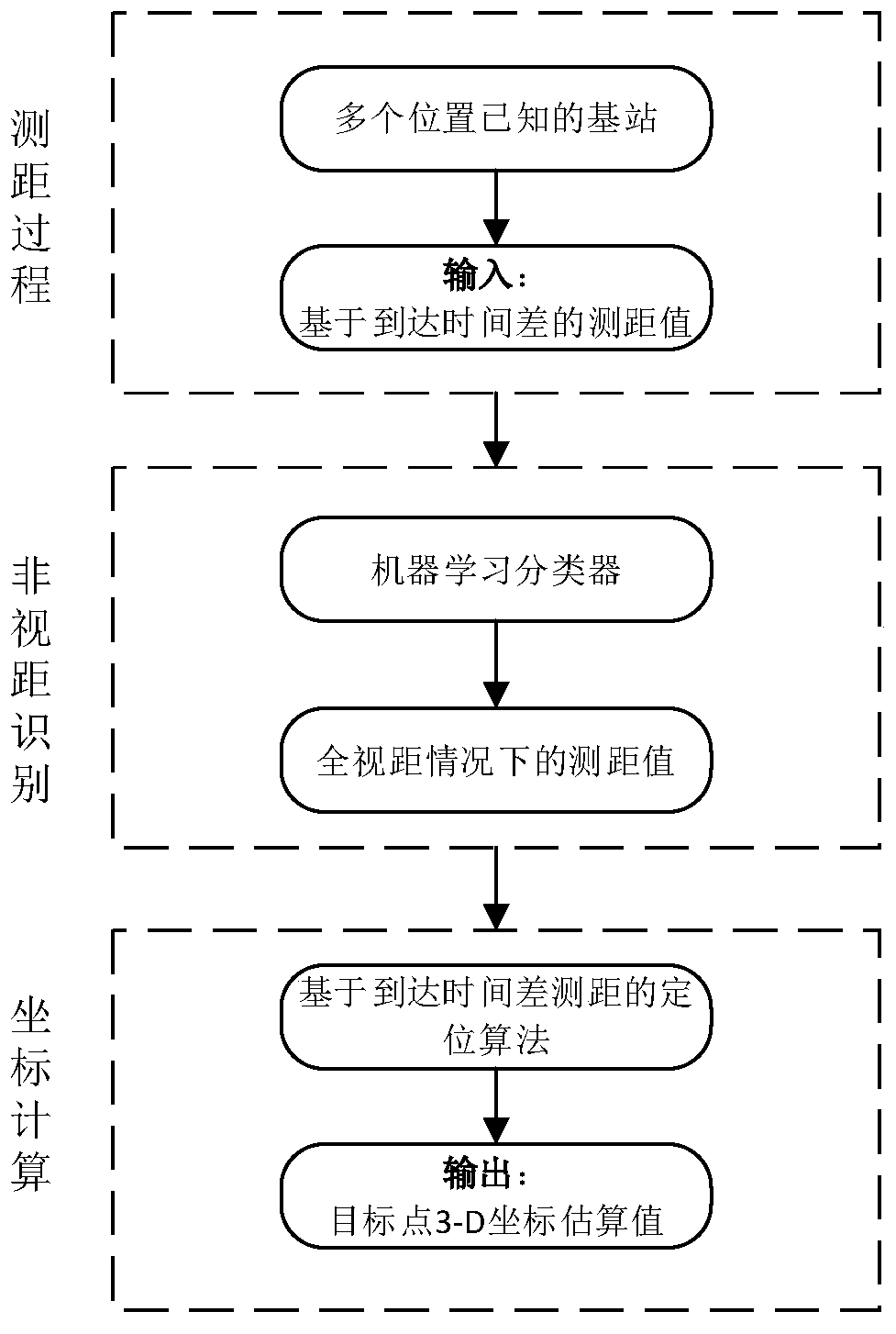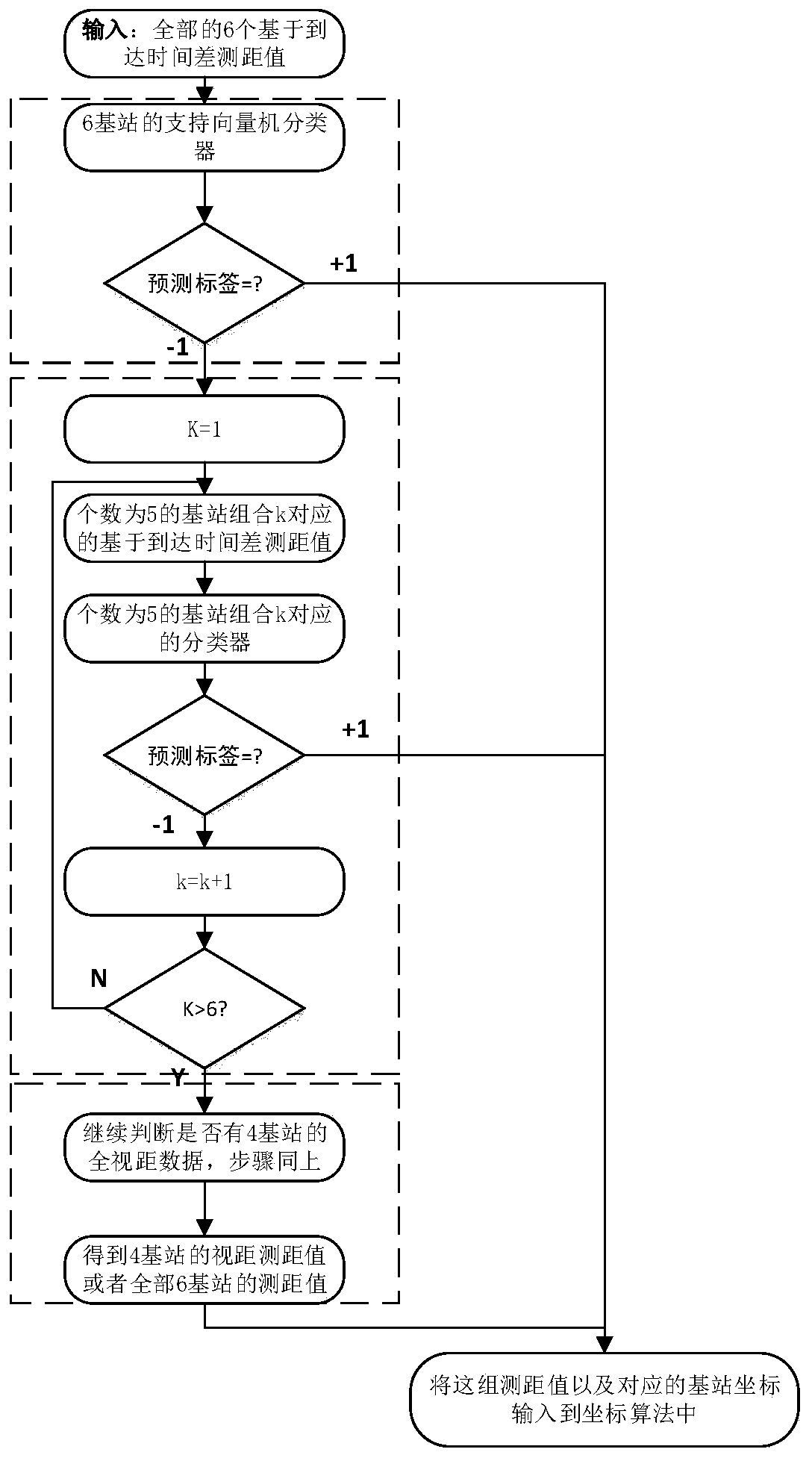Indoor positioning method based on machine learning
A machine learning, indoor positioning technology, applied in the field of indoor positioning based on machine learning, can solve the problems of complex synchronization, implementation constraints, signal strength differences, etc., to achieve the effects of efficient communication, reduced equipment costs, and improved accuracy
- Summary
- Abstract
- Description
- Claims
- Application Information
AI Technical Summary
Problems solved by technology
Method used
Image
Examples
Embodiment Construction
[0030] The technical solution of the present invention will be further introduced below in combination with specific embodiments.
[0031] This specific embodiment discloses an indoor positioning method based on machine learning, such as figure 1 shown, including the following steps:
[0032] S1: Arrange multiple base stations with known coordinates in the indoor positioning area; the number of base stations is greater than or equal to 4, and any 4 base stations are not on the same plane;
[0033] S2: Divide the indoor space into multiple small areas. For each small area, take its center point to measure its line-of-sight and the distance measurement value based on the time difference of arrival in a non-line-of-sight environment; each small area does not overlap , and the size specification of the small area is determined by the positioning accuracy;
[0034] S3: On the basis of the measured data of the ranging value obtained in step S2, use the computer to simulate the ran...
PUM
 Login to View More
Login to View More Abstract
Description
Claims
Application Information
 Login to View More
Login to View More - R&D
- Intellectual Property
- Life Sciences
- Materials
- Tech Scout
- Unparalleled Data Quality
- Higher Quality Content
- 60% Fewer Hallucinations
Browse by: Latest US Patents, China's latest patents, Technical Efficacy Thesaurus, Application Domain, Technology Topic, Popular Technical Reports.
© 2025 PatSnap. All rights reserved.Legal|Privacy policy|Modern Slavery Act Transparency Statement|Sitemap|About US| Contact US: help@patsnap.com



